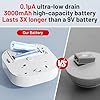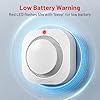Metal detectors can be used in snow, but there are a few things to keep in mind. The biggest challenge is that the metal detector will be less sensitive in cold weather. This means that you’ll need to move more slowly and be more careful in your sweeping. It’s also important to avoid wet, slushy snow, as this can damage the metal detector.
Contents
How to use a metal detector in the snow?
Assuming you have a basic understanding of how metal detectors work, using one in the snow is not much different than using one in other conditions. The main thing to keep in mind is that the snow will affect the metal detector’s ability to read the ground, so you may have to adjust the settings accordingly.
If you’re new to metal detecting, start by reading the user manual for your specific model. This will give you a good understanding of how the machine works and what the different settings do. Once you have a basic understanding, head to an area with light snowfall.
Begin by scanning the ground with the metal detector turned off. This will help you get a feel for the terrain and any obstacles that may be hidden beneath the snow. Once you have a good idea of the layout, turn on the metal detector and slowly sweep it back and forth across the ground.
Pay attention to the readings on the screen and be sure to mark any areas where you get a strong signal. Once you’ve marked all of the potential areas, it’s time to start digging. Be sure to dig carefully and slowly so you don’t damage any potential finds.
With a little practice, you’ll be able to use your metal detector in the snow with ease.
The best metal detectors for use in the snow
While there are many different types of metal detectors on the market, not all of them are well-suited for use in the snow. In general, the best metal detectors for use in the snow are those that feature a waterproof and/or weather-resistant design. This is because the snow can often contain moisture, which can damage electronic components.
Some of the best metal detectors for use in the snow are also equipped with special features that help to filter out false signals. This is important because the snow can often interfere with the metal detector’s ability to accurately identify metal objects.
Finally, it is also important to choose a metal detector that is comfortable to use in cold weather. This is because the cold can make it difficult to hold the metal detector for long periods of time.
How to find lost items in the snow with a metal detector?
While it may seem impossible to find lost items in the snow, a metal detector can be a helpful tool. If the snow is not too deep, you can slowly move the detector across the ground in a grid pattern. If the snow is deeper, you may need to shovel away some of the snow to get to the ground. Once you have found the item, mark the spot with a flag or marker so you can easily find it again.
The benefits of using a metal detector in the snow
While metal detectors are most commonly associated with beachcombing, they can also be an effective tool for finding hidden objects in the snow. Metal detectors work by detecting the presence of metal objects in the ground, and they can be used to find coins, jewelry, and other small metal objects that may be hidden in the snow.
There are several benefits to using a metal detector in the snow. First, metal detectors are very sensitive and can detect even small metal objects that may be buried in the snow. Second, metal detectors can be used to scan a large area quickly, making them ideal for search and rescue operations.
Finally, metal detectors can be used in combination with other tools, such as shovels and probes, to help locate hidden objects.
Metal detectors can be an invaluable tool for anyone who spends time in the snow. Whether you are looking for lost objects or searching for hidden treasures, a metal detector can help you find what you are looking for.
The history of metal detecting in the snow
While metal detecting in the snow may seem like a relatively recent phenomenon, it actually has a long and fascinating history. Metal detectors have been used in the snow for a variety of purposes, from locating buried treasure to searching for lost aircraft.
One of the earliest recorded instances of metal detecting in the snow took place in the early 1900s, when a group of prospectors used metal detectors to search for gold in the Klondike region of Alaska. In more recent years, metal detectors have been used to locate lost aircraft, such as in the case of the missing Malaysian Airlines flight MH370.
Metal detecting in the snow can be a challenging but rewarding activity. When searching in the snow, it is important to use a metal detector that is specifically designed for use in cold weather conditions. In addition, it is important to be aware of the potential for false positives, as metal objects can reflect signals from the metal detector and create false readings.
With proper care and preparation, metal detecting in the snow can be a fun and rewarding way to search for buried treasure, lost aircraft, or anything else that may be hidden beneath the snow.
The science behind metal detectors and how they work in the snow
Metal detectors are devices that are used to detect the presence of metal in an area. There are many different types of metal detectors, but they all work on the same principle. A metal detector consists of a coil of wire that is wrapped around a metal rod. When the coil of wire is connected to a power source, it creates a magnetic field. This magnetic field is used to detect the presence of metal in an area.
Metal detectors work by detecting the metal in the area and then sending out a signal. The signal is then amplified and sent to a receiver. The receiver then interprets the signal and displays the information on a screen.
Metal detectors can be used to find metal in the snow. The metal in the snow can be detected by the metal detector’s coil. The coil creates a magnetic field that is used to detect the metal in the snow. The metal in the snow can also be detected by the metal detector’s receiver. The receiver interprets the signal and displays the information on a screen.
Metal detectors can be used to find metal in the snow. The metal in the snow can be detected by the metal detector’s coil. The coil creates a magnetic field that is used to detect the metal in the snow. The metal in the snow can also be detected by the metal detector’s receiver. The receiver interprets the signal and displays the information on a screen.
Tips and tricks for using a metal detector in the snow
If you’re hoping to find buried treasure in the snow, you’ll need to use a metal detector. But there are a few things you should keep in mind when using a metal detector in the snow.
First, the snow will act as a conductor of electricity, which can interfere with the metal detector’s signal. To help counteract this, you can ground the metal detector by attaching a copper wire to the frame and running it into the ground.
You’ll also need to be extra careful when scanning in the snow, as the detector can easily miss small objects that are buried underneath. It’s a good idea to scan in a grid pattern and take your time.
Finally, keep in mind that metal detectors can’t penetrate very far into the ground, so you’ll likely only find shallowly buried objects. If you’re hoping to find something deeper, you may need to dig through the snow.
Summary
If you’re wondering whether or not your metal detector will work in snow, the answer is yes! Metal detectors are designed to work in all types of weather, including snow. However, there are a few things you should keep in mind when using your metal detector in snow.
First, the depth of the snow will affect how well your metal detector works. The deeper the snow, the more difficult it will be for the metal detector to pick up signals. Second, metal detectors work best when the ground is dry.
If the ground is wet, it will be more difficult for the metal detector to pick up signals. Finally, metal detectors are more likely to pick up false signals in snow than in other conditions. This is because metal detectors are sensitive to metal objects, and snow is full of metal particles.



















